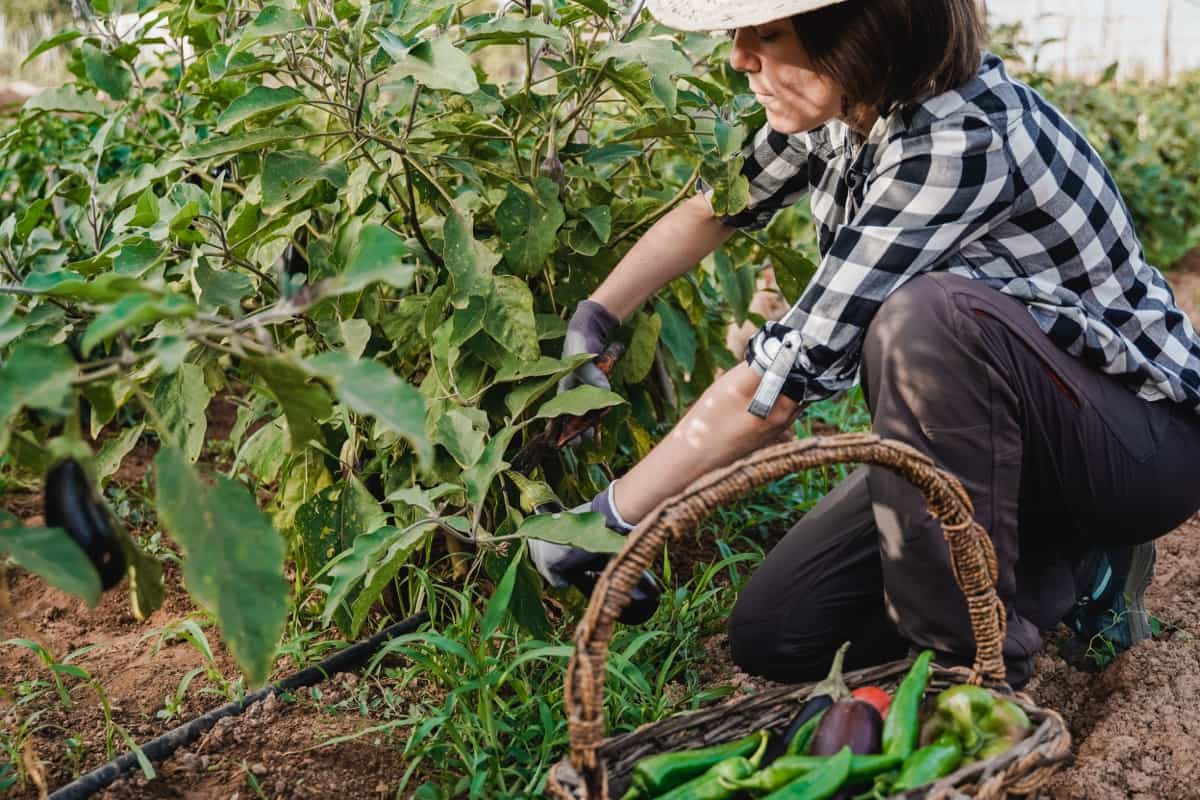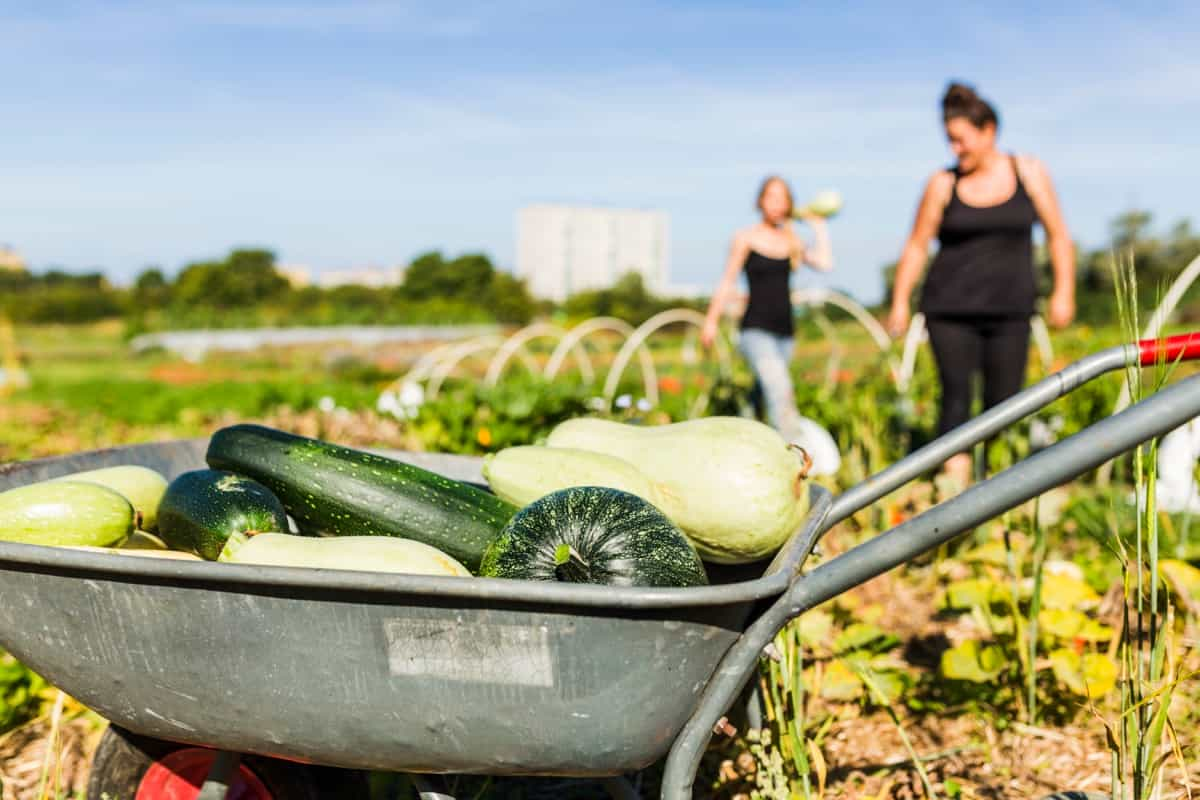By applying effective gardening techniques in planting vegetables, you can make a sustainable food source for yourself and your family. Gardening techniques play a major role in the success of your vegetable garden. With proper gardening care, you can reap the rewards of bountiful harvests throughout the year.

Creating the Perfect Bed for Vegetable Gardening
Start by choosing a sunny place with well-drained soil. Clear any weeds or debris and loosen the soil to allow roots to penetrate easily. Consider raised beds for better drainage and soil structure. Make sure the bed is at least 6-8 inches deep to accommodate root growth. Use a fork or tiller to mix in amendments evenly throughout the bed.
Seed Selection and Sowing Techniques
Selecting the right seeds for your vegetable garden is crucial. When choosing what to plant, consider factors like your climate, soil type, and personal preferences. Before sowing, read the seed packet instructions carefully. They provide valuable information on planting depth, spacing, and ideal growing conditions. Some seeds benefit from pre-soaking or scarification to improve germination rates.
When sowing seeds in your garden bed, make sure to prepare the soil properly beforehand. Create furrows or holes according to the seed’s requirements and cover them gently with soil. Keep the area consistently moist until you see sprouts emerging. Remember to label your rows or plots to avoid confusion once plants start growing.
Maximizing Space and Yield in Your Garden
Maximizing space is key to achieving a bountiful harvest. One technique that can help you make the most of your garden area is vertical gardening. By utilizing trellises, stakes, or cages, you can train vining plants like tomatoes, cucumbers, and beans to grow upwards instead of sprawling out horizontally. Intercropping is another strategy for optimizing space in your garden. By planting compatible crops together in the same area, you can increase yield and reduce wasted space between rows.
Square foot gardening is a common way to maximize yields in small spaces. By dividing your garden into square-foot sections and densely planting each square with different vegetables according to their spacing requirements, you can efficiently use every inch of available soil.
Ensuring Healthy and Productive Vegetable Plants
Start by providing your plants with the right amount of sunlight, water, and nutrients they need to thrive. Then, regularly check for any signs of pests or diseases that could harm your plants. It’s important to practice good gardening hygiene by removing any dead or diseased leaves promptly. Proper spacing between garden plants can also help improve air circulation and reduce fungal infections. Consider using organic fertilizers to feed your vegetables naturally without harsh chemicals. Stay observant; monitor plant growth, leaf color, and overall health regularly.
In case you missed it: Gongura Seed Germination and Planting Methods

Natural Ways to Boost Vegetable Growth
The effective method is companion planting, where certain plants are grown together to benefit each other by deterring pests or providing essential nutrients. Another way to promote vegetable growth naturally is through using organic compost or manure. These natural soil amendments help enrich the soil with vital nutrients, promoting strong root development and overall plant health.
Furthermore, consider incorporating beneficial insects like ladybugs or praying mantises into your garden ecosystem. These natural predators can help control harmful pests that may hinder vegetable growth. Utilizing homemade organic fertilizers such as compost tea or seaweed extract can provide a nutrient-rich boost for your plants without harsh chemicals.
Mulching Techniques for Weed Control and Soil Moisture Retention
When choosing mulch for your garden, opt for organic materials like straw, compost, or shredded leaves. These not only suppress weed growth but also break down over time to enrich the soil with essential nutrients. To effectively use mulch for weed control and moisture retention, apply a layer around your vegetable plants while leaving some space near the stems to prevent rotting.
Make sure the mulch layer is thick enough to keep sunlight from reaching weed seeds below and retain moisture without suffocating plant roots. Regularly inspect your mulch layer to ensure its thickness and effectiveness in keeping weeds at bay and preserving soil moisture levels.
Integrated Pest Management
Aphids, those tiny insects that love to suck sap from your plants, can quickly multiply and stunt growth. Cabbage worms are sneaky culprits that munch on the leaves of cabbage, broccoli, and other cruciferous vegetables. Don’t forget about the pesky tomato hornworms that camouflage themselves well among tomato plants; these voracious eaters can defoliate a plant in no time. Squash bugs are another enemy to look out for, especially if you’re growing zucchini or pumpkins. Slugs and snails may seem harmless but can devour tender seedlings overnight.
In case you missed it: Planting and Spacing Techniques in Papaya: A Beginner’s Guide

The key aspect of IPM is regularly monitoring your plants for pest or infestation signs. Encouraging beneficial insects can help naturally control pest populations by preying on them. Also, planting companion plants that repel pests or attract beneficial insects can create a more balanced ecosystem in your garden. Physical barriers can also protect vulnerable plants from pests.
Crop Rotation Strategies
Crop rotation is a smart gardening technique that involves changing the crops grown in specific areas each season. This method helps maintain soil health and fertility by preventing nutrient depletion and minimizing pest and disease buildup. The effective strategy is to group plants from the same botanical family.
For example, nightshades like tomatoes and peppers are prone to similar diseases, so it’s best not to plant them in the same spot year after year. Instead, rotate them with leafy greens or legumes to break pest cycles naturally. Another approach is to follow a three-year cycle where you divide your garden into thirds and plant different crop families in each section every year.
Pruning and Training Techniques
By selectively removing unwanted branches or foliage, you can direct the plant’s energy towards producing more fruits or vegetables. Whether it’s pinching off suckers on tomato plants or thinning out crowded areas to improve air circulation, proper pruning helps prevent diseases and encourages better yields. Training your plants to grow in a certain way can also make efficient use of space, especially in smaller gardens. Techniques like trellising cucumbers or using stakes for vertical support not only save space but also make harvesting easier.
Planting Timing for Year-Round Harvests
By strategically scheduling your plantings, you can ensure a supply of fresh produce throughout the seasons. Begin by researching the ideal planting times for each vegetable variety in your specific climate zone. Understanding the best times to sow seeds or transplant seedlings will help you maximize your garden’s productivity. Don’t forget to factor in the time it takes for each vegetable variety to mature.
In case you missed it: Maximize Growth & Flavor: The Ultimate Guide to Companion Planting in Herb Gardens

Some crops, like leafy greens and radishes, are ready for harvest in a few weeks, while others, such as tomatoes or pumpkins, may take several months before they’re ready to pick. Plan and stagger your plantings to extend your harvest period. Gardening techniques play a crucial role in ensuring a bountiful harvest and healthy plants. From preparing the soil to selecting the right seeds, each step impacts the health and yield of your plants.
- Best Liquid Fertilizer for Flowering Plants
- How to Set Up an Efficient Watering System for Home Garden
- How to Mulch Tulip Bulbs: Expert Tips Best Tulip Blooms
- Common Problems with Potted Figs and How to Solve Them
- How to Prevent Flower Drops in Pomegranate Trees: Effective Tips
- How to Boost Ridge Gourd Flowering and Yield: A Beginner’s Guide
- Effective Pollination Techniques for Maximizing Gourds Yield
- Composting Techniques for Manure in Home Gardens
- A Step-by-Step Guide on Propagation Techniques for Jasmine Plants